What does each F1 flag mean?
Formula 1 has a flag for almost every occasion, but what does each one mean? Here's a full breakdown of the flags at a race marshal's disposal
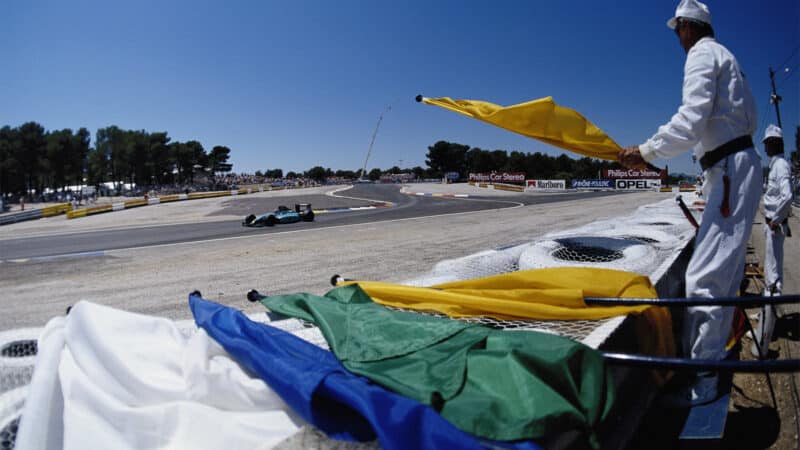
Which F1 flags signal what?
Getty Images
Throughout Formula 1’s 74 year history, flags have remained the main point of communication between the race directors and the drivers on track.
Whether being displayed on high-tech light panels — which can be operated by race control or trackside by marshals — or waved by a marshal, they’re vital to the running and safety of grand prix races.
Yet even the most avid of Formula 1 fans may not know what every one of these flags actually indicates – understandably, as some haven’t been shown in decades. Let’s break them down.
What does a green flag mean?
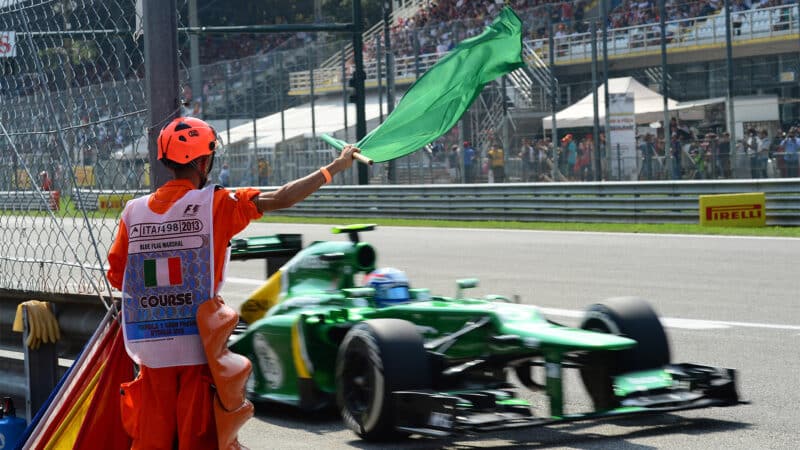
Go, go, go!
Grand Prix Photo
The flag we all want to see: the green flag means normal racing conditions apply and drivers are permitted to drive as fast as they dare.
Aside from being waved at the start of every race, the green flag is also used to resume racing after a safety car restart or to signal that the circuit is safe following an incident. It is also used to mark the end of a yellow flagged sector — allowing cars to return to racing speed on parts of the circuit where there is no danger or threat.
While the green flag is perhaps the most simple and commonly used of all track-side markers, it can still catch some drivers out, as Sergio Perez found out at the 2022 French Grand Prix. Following a Virtual Safety Car (VSC) period, where drivers are required to reduce their speed so an incident can be cleared, George Russell caught Perez napping as the VSC ended, leading to Russell snatching second place when the race went green.
What does a blue flag mean?
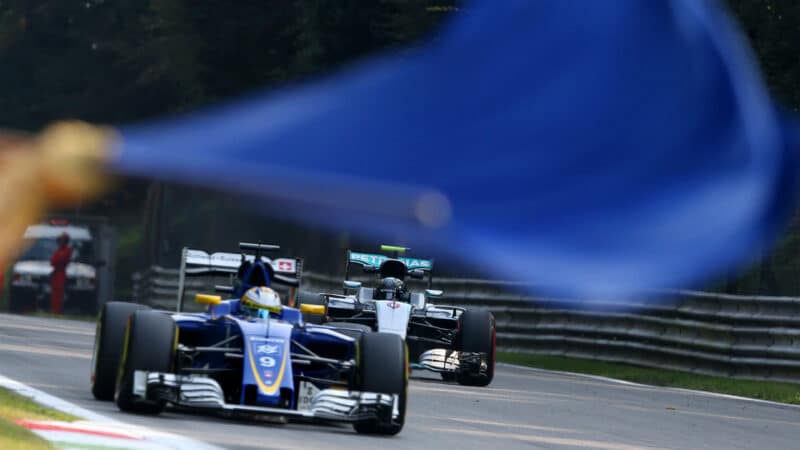
Get out of the way, there’s someone faster behind you…
Grand Prix Photo
Introduced in 1995, blue flags are used by marshals to alert drivers of a faster car behind them, and are common place in most races — especially those most recently which contain the charging Red Bull of Max Verstappen.
In practice or qualifying, this may be used to warn drivers of another driver on a fast lap and not to slow them down. In the race, it signals to a driver that they are about to be lapped and must let the faster car through at the next available opportunity. Passing three blue flags without giving way can result in a penalty.
While they must be adhered to, blue flags can be difficult for drivers who are entrenched in their own battles, who don’t want to lose too much time letting the lead cars through at an inopportune moment. But luck plays a part too, as certain parts of a track will be easier to let someone through than others, meaning both the lead cars and lapped cars can suffer under blue flags.
What does a yellow flag mean?
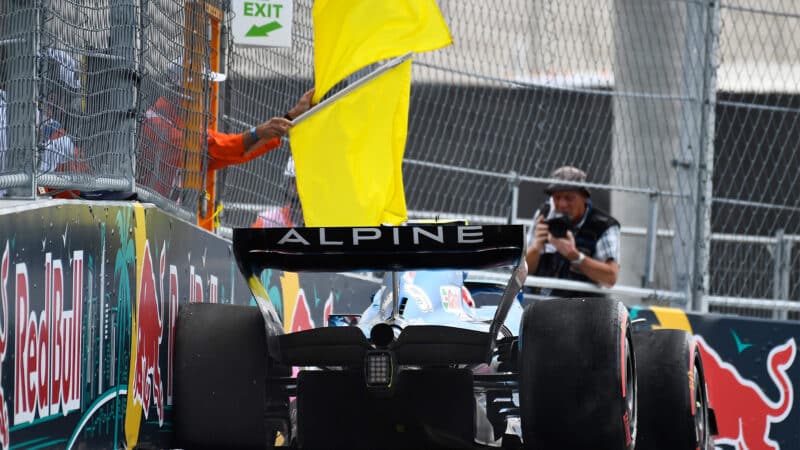
Danger ahead, slow down!
Grand Prix Photo
Yellow flags are waved to indicate caution either on or near the track and force drivers to reduce their speed immediately. Overtaking is prohibited and failing to slow quickly or sufficiently can result in a penalty. The severity of an incodent is indicated in the way that they are flown.
A single waved yellow flag is usually less cause for concern, indicating “there is a hazard beside or partly on the track”. As a result, drivers must reduce their speed and be prepared to change direction.
Double waved yellow flags tell drivers that “there is a hazard wholly or partly blocking the track and/or marshals working on or beside the track”. Once again, drivers must significantly reduce their speed enough do that they are prepared to change direction or stop.
Yellow flags may be accompanied by a white board displaying “SC” or “VSC”, if a regular or virtual safety car is required to slow the entire field down while an incident is attended to.
The use and application of yellow flags have brought controversy over the years, particularly in qualifying sessions. Drivers not slowing down sufficiently enough have seen lap times deleted or received grid penalties as we saw in 2021, with Max Verstappen and Valtteri Bottas at the Qatar Grand Prix.
Some drivers have also been accused of causing yellow flags on purpose, by either driving slowly or crashing intentionally in order to preserve their current grid position. Sergio Perez was criticised by his team-mate Max Verstappen who suspected him of doing just this in 2022, when he span at Monaco’s Portier corner Perez qualified third as a result — with Verstappen behind him in fourth — and he won the Grand Prix the following day.
What does a red flag mean?
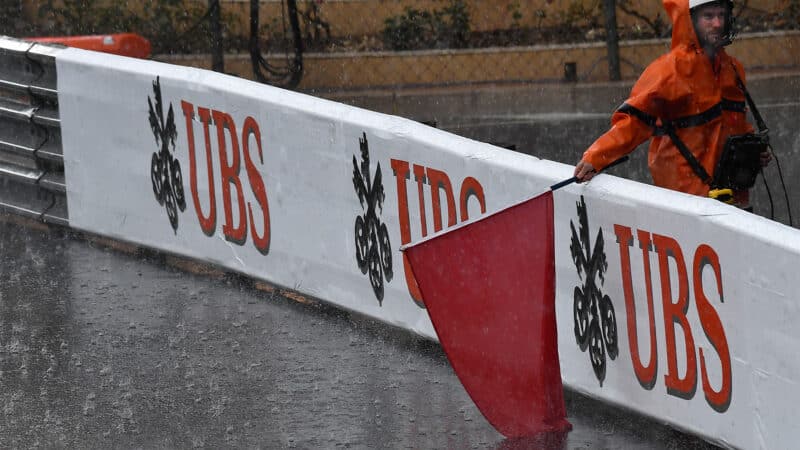
Stop the race!
Grand Prix Photo
The red flag is shown to halt the race, typically due to poor conditions — such as heavy rain or fog — or a serious accident that needs immediate. When used, it iswaved at every marshal post around the track as well as the start/finish line. Drivers must make their way back to the pitlane and will significantly reduce their speed in doing so, or remain stationary if they cannot continue driving safety.
20 red flags have been used during the last four F1 seasons alone — which is seven more than the entire previous decade put together.
This is likely due to the increase in concern for safety in Formula 1, particularly after the death of Jules Bianchi in 2014. The weather conditions seen in that race would’ve likely seen a red flag today as we saw in Spa 2021 and Suzuka 2022.
What does a black flag mean?
The black flag is the Formula 1 equivalent football’s red card – disqualifying drivers and forcing them to return to the garage immediately. It’s also usually accompanied by the driver in question’s number on a digital board, to clarify who is receiving the notice.
Newer F1 fans may be forgiven for raising their eyebrow at this one, as the black flag has not been waved since 2007, when Felipe Massa and Giancarlo Fisichella left the pitlane while the exit lights were red.
The black flag does not discriminate, though. F1 legends such as Ayrton Senna, Nigel Mansell and Michael Schumacher all saw the black flag waved in their direction during their careers — either for driving dangerously or for breaching the rules.
But to this day, only one driver has been black-flagged from a race for driving too slowly: British-Canadian driver Al Pease who held up eventual race winner Jacky Ickx on several occasions at the 1969 Canadian Grand Prix.
What does a black and white flag mean?
Keeping with the football analogy, the black and white flag serves as F1’s yellow card: warning drivers directly via digital boards of a breach in the rules or after an act of unsportsmanlike behaviour.
This is usually accompanied by a radio message from the team, letting their driver know that their misdemeanour has been noted. If drivers don’t heed the warning then they can expect a more severe penalty. For example, drivers can breach track limits three times over the course of the race before being issued a warning through a black and white flag. Should they cross the limit one more time after that, they will receive a penalty.
But should they continue to accumulate more black and white flag warnings, they could ultimately end up being disqualified.
What does a black and orange flag mean?
The black and orange flag is waved toward a driver who has a mechanical issue likely to endanger themselves or others and must pit to resolve it. Once fixed to the stewards’ satisfaction, the driver may re-join the race.
While fairly uncommon, the use of the black and orange flag can be quite inconsistent, as it relies upon the stewards to determine the severity of the damage.
After qualifying a brilliant fifth, Haas driver Kevin Magnussen damaged a front wing end plate during the start of the 2022 grand prix and was forced to pit for repairs despite him insisting that the car was still drivable. He re-emerged back on track in last place and ultimately finished 17th.
The black and orange flag is usually accompanied by the driver in question’s number on a digital board, to clarify who is receiving the notice.
What does a white flag mean?
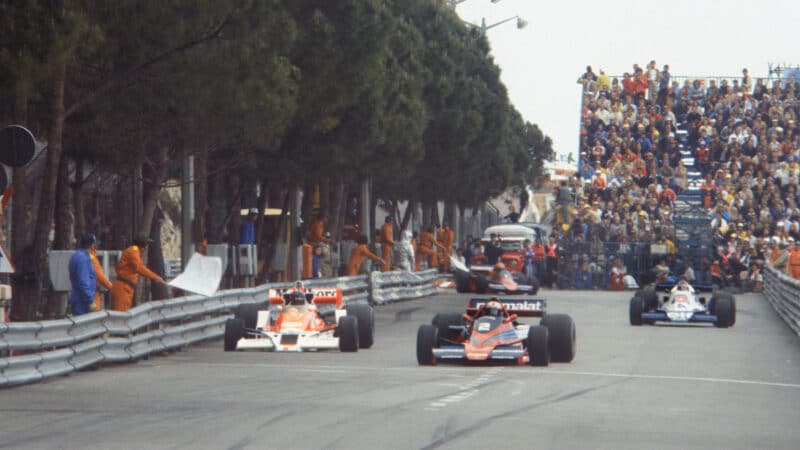
Be careful, slow traffic ahead…
Grand Prix Photo
The white flag is used to warn drivers of a much slower-moving or stationary vehicle on track.
This will most often be seen on the last corner and/or pit straight of a track at the end of a practice session, when drivers will perform practice starts on the grid.
It can also be used to signal a miscellaneous vehicle such as a medical car on track.
What does a red and yellow striped flag mean?
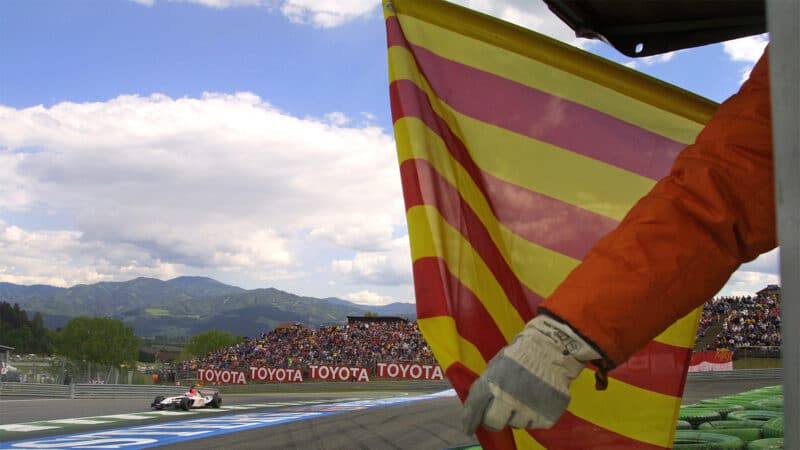
Be careful, unknown territory ahead…
Grand Prix Photo
The red and yellow flag signals a change of surface and/or loss of grip in the area after the flag.
This could be due to water, oil, or anything deemed necessary for the flag to be waved.
What does a chequered flag mean?
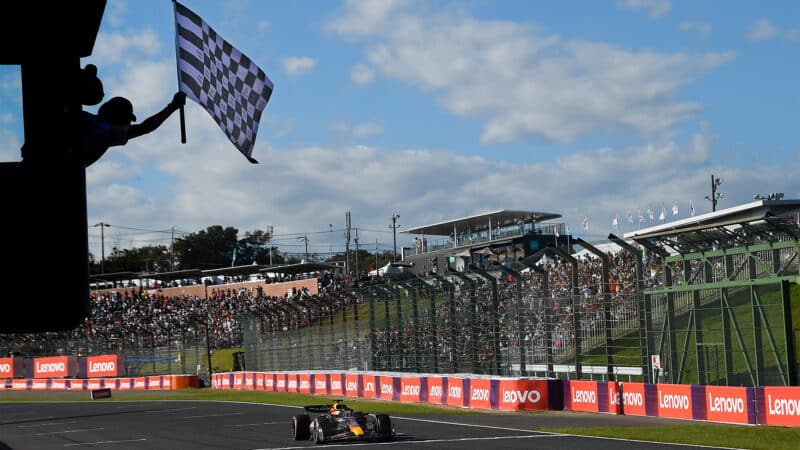
It’s time to celebrate…just as long as you see the chequered flag first!
Grand Prix Photo
What better way to end than with the chequered flag?
Waved at the end of every grand prix and the end of every practice and qualifying session, the chequer can spell joy or dismay for any Formula 1 driver. Although it has become an activity for celebrities over the years (who from time to time get it wrong) and even having ended races early due to some technological blunders, it prevails as one of the most iconic symbols in all of motor sport.
What are light panels?
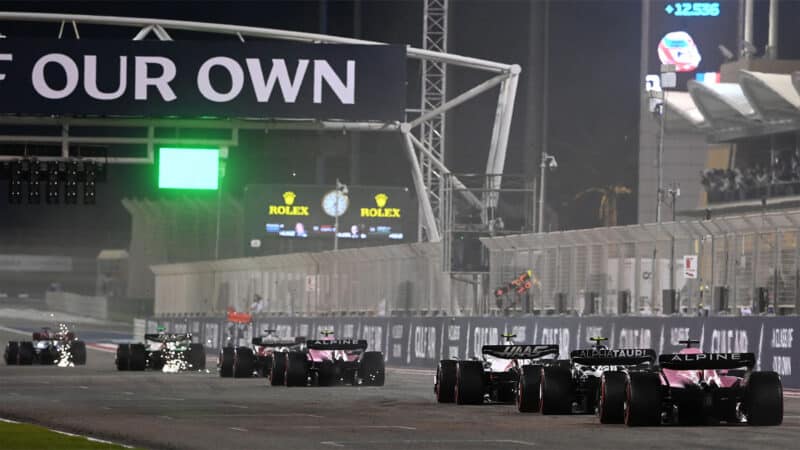
Clearer and safer: Every F1 circuit has used light panels since 2022
Getty Images
High-tech light panels have been made mandatory at all F1 circuits since 2022, as part of a new safety partnership with the FIA.
Acting as an alternative to the traditional flag system, light panels can be operated by both trackside marshals as well as race control and can display crucial information to drivers on track including weather status, flag information or weather SC or VSC’s have been deployed.
Not only can they be seen more clearly by competitors in almost any condition, but they can also be deployed on parts of the circuit where there are no marshal posts nearby — ensuring that drivers can remain safe no matter where they are on the circuit.
